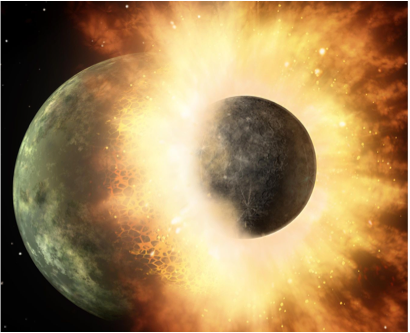154 22.4 Earth’s First 2 Billion Years — Physical Geology – 2nd Edition

One thing we can say for sure about Earth’s second experiment is that there was effectively no free oxygen (O2, the form of oxygen that we breathe) in the atmosphere. We know this in part because prior to 2 billion years ago, there were no sedimentary beds stained red from oxidized iron minerals. Iron minerals were present, but not in oxidized form. At that time, O2 was produced in the atmosphere when the Sun’s ultraviolet rays split water molecules apart; however, chemical reactions removed the oxygen as quickly as it was produced.
It wasn’t until well into Earth’s third experiment—life—that the atmosphere began to become oxygenated. Photosynthetic organisms used the abundant CO2 in the atmosphere to manufacture their food, and released O2 as a by-product. At first all of the oxygen was consumed by chemical reactions, but eventually the organisms released so much O2 that it overwhelmed the chemical reactions and oxygen began to accumulate in the atmosphere, although present levels of 21% oxygen didn’t occur until about 350 Ma. Today the part of our atmosphere that isn’t oxygen consists largely of nitrogen (78%).
The oxygen-rich atmosphere on our planet is life’s signature. If geologic process were the only processes controlling our atmosphere, it would consist mostly of carbon dioxide, like the atmosphere of Venus. It is an interesting notion (or a disconcerting one, depending on your point of view) that for the last 2 billion years the light reflected from our planet has been beaming a bar code out to the universe, similar to the ones in Figure 22.1.4, except ours says “oxygen.” For 2 billion years, our planet has been sending out a signal that could cause an observer from another world to say, “That’s odd… I wonder what’s going on over there.”
Media Attributions
- Figure 22.4.1: “Planetary Smash-Up” by NASA/JPL-Caltech. Public domain.
<!– pb_fixme –>
<!– pb_fixme –>

